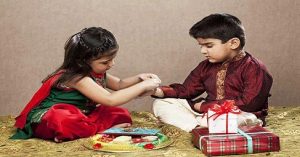
Why Do We Celebrate Raksha Bandhan, Its History, Significance and Purpose of Rakhi
Raksha Bandhan, also known as Rakhi Purnima or simply Rakhi is the Shravan purnima’s second festival. The festival falls on the full moon day (Shravan Poornima) of the Shravan month of the Hindu calendar. In some areas, it is also called as Jandhyala Purnima. Raksha Bandhan is a Hindu festival that celebrates the love and duty between brothers and sisters. The festival is observed by Hindus, Jains, and many Sikhs. Raksha Bandhan is a festival which celebrates the bond of affection between brothers and sisters. It is a day when siblings pray for each others’ well being and wish for each others’ happiness and goodwill. This relationship is nowhere as celebrated as in India.
On Raksha Bandhan, sisters tie a rakhi (sacred thread) on her brother’s wrist. This symbolizes the sister’s love and prayers for her brother’s well-being, and the brother’s lifelong vow to protect her. Raksha Bandhan is an ancient festival, and has many myths and historic legends linked to it.
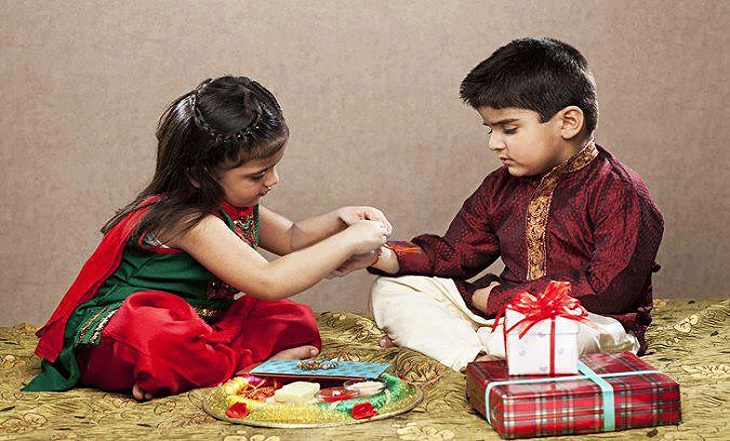
Significance of Raksha Bandhan in History & Mythology:
Like all Indian festivals, the festival of Rakhi has numerous tales associated with it. Here are some you may or may not have heard. Some of these include:
Lord Krishna and Draupathi:
Perhaps the most popular of the rakhi stories in our mythology is that of Lord Krishna and Draupadi — the wife of the five Pandavas. When Krishna cut his finger while beheading the evil King Shishupal in order to protect the good people, Draupathi immediately tore off a piece of her sari and tied around his wrist to stop the bleeding. Krishna said that with this loving act, she wrapped him in debt and he would repay each “thread” when the time arrives. Many years later, that was how Draupadi’s sari became endless and saved her embarrassment on the day she was disrobed in full public view in king Dritarashtra’s court. This is one of the stories of the origin of the Raksha Bandhan festival.
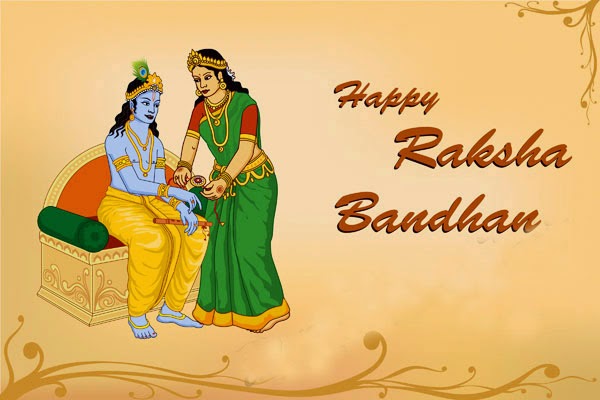
King Bali and Goddess Laxmi:
According to Bhagavata Purana and Vishnu Purana, after Vishnu won the three worlds from the demon King Bali, he was asked by Bali that Vishnu would live in his palace leaving Vaikuntam, a request Vishnu granted. Goddess Lakshmi – the wife of lord Vishnu has been missing him and she wanted lord Vishnu along with her. So, on Shravana purnima, she went to Bali, tied a Rakhi and made him a brother. Bali asked her what gift she desired. Lakshmi asked that Vishnu should be freed from the request that he live in Bali’s palace. Bali consented, as well accepted her as his sister. It is said that since that day it has become a tradition to invite sisters on Sravana pournima to tie sacred thread of Rakhi or Raksha bandan.
Birth of Santoshi Ma:
Now even though this tale has no basis in the Hindu scriptures, the take of the birth of Santoshi Maa has been linked to the festival of Raksha Bandhan. On the auspicious day, Lord Ganesha’s sister Manasa visits him to tie him the rakhi. On seeing this, Ganesha’s two sons, Shubh and Labh begin insisting heir father Ganesh for a sister, but to no avail. Giving in to their demands, Ganesha creates goddess Santoshi from the divine flames that are said to have emerged from his consorts — Riddhi and Siddhi. Thereafter, Shubh Labh had a sister named Santoshi Ma (literally “Goddess of Satisfaction”), who loved and protected each other.
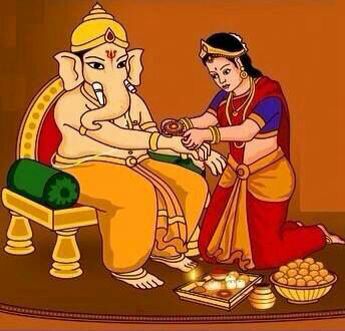
Historical References for Raksha Bandhan:
Rani Karnavati and Emperor Humayun:
Among the many tales of Raksha Bandhan, a version of the story of Rani Karnavati and Emperor Humayun is one that often finds a mention and is the most significant evidence in the history.
During the medieval era, when Rani Karnavati, the widowed queen of the king of Chittor, realised that she could not defend against the invasion by the Sultan of Gujarat, Bahadur Shah, she sent a Rakhi to Emperor Humayun. The Emperor touched by the gesture and immediately set off with his troops to defend Chittor.
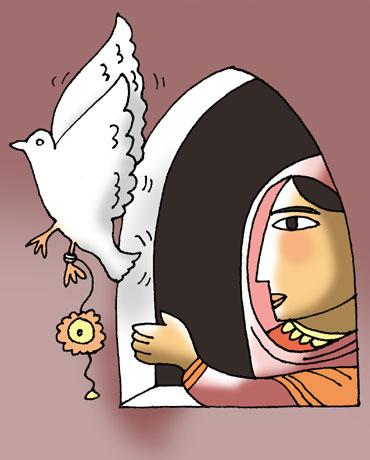
Alexander, the Great and King Puru:
The oldest reference to the festival of rakhi goes back to 300 B.C. at the time when Alexander invaded India. It is said that the great conqueror, King Alexander of Macedonia was shaken by the fury of the Indian king Puru in his first attempt. Upset by this, Alexander’s wife, Roxana who had heard of the Rakhi festival, approached King Puru. King Puru accepted her as his sister. On the battlefield, when Puru was about to deliver a final blow to Alexander, he saw the rakhi on his own wrist and restrained himself from attacking Alexander personally.
Today’s Scenario of Raksha Bandhan:
In today’s scenario, the day has a different perspective. The values and the sentiments attached to the rituals of this festival are worth inculcating by the whole human race, the sentiments of harmony and peaceful coexistence. The festival of Raksha Bandhan assumes all forms of Raksha or protection, of righteousness and destroyer of all sin. At present generation, the ritual of Rakhi tying has also been celebrated by students tying Rakhis to Prisioners to bring a change in them.
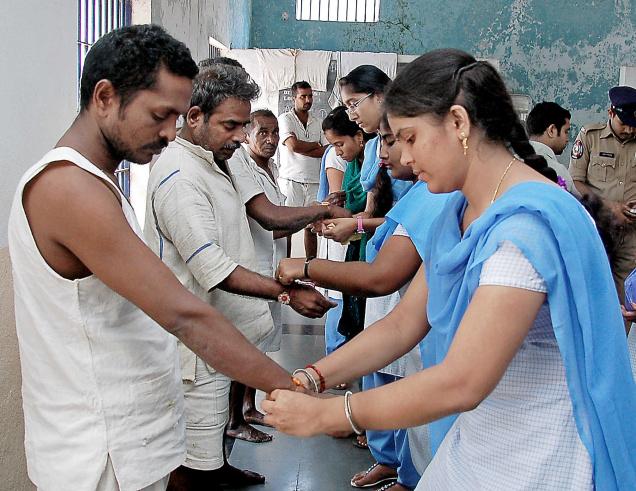
On Raksha Bandha, every year, school children tie a Rakhi to the President of India at Rashtrapathi Bhavan.
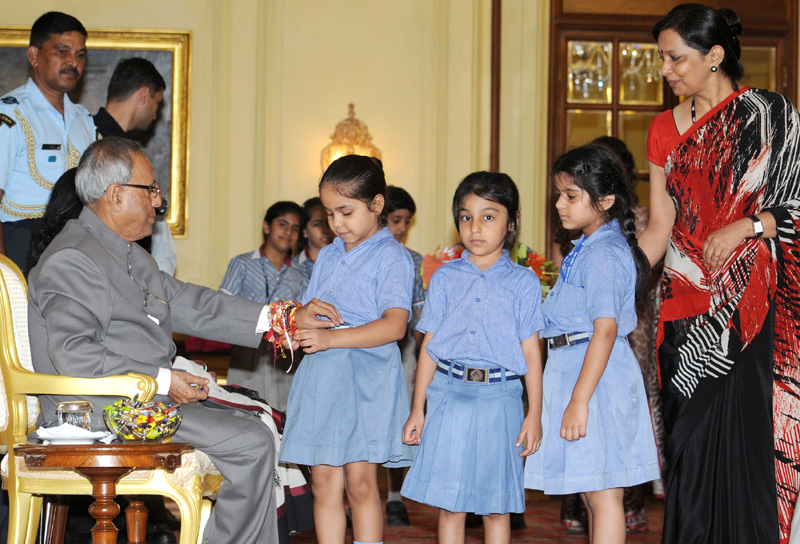
Each person should celebrate Raksha Bandhan with enthusiasm. Along with a prayer of the sister for welfare of the brother and the brother for protection of the sister, both should pray for strength to protect the nation and Dharma. On this day frequencies of Lord Ganesh and deity Saraswati reach the earth in greater quantities and both the siblings benefit from the custom to a greater extent. It is said that, when tying the rakhi the divine Energy principle in the woman gets manifested and is transmitted to the man through the wrist. Thus he derives 2 % benefit from it for upto 5 hours.